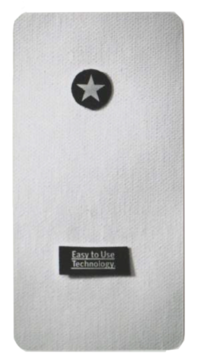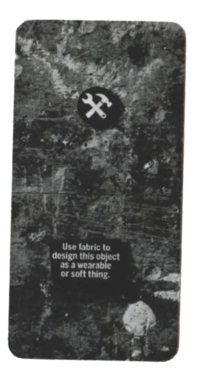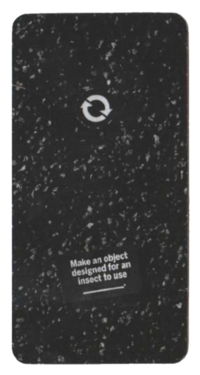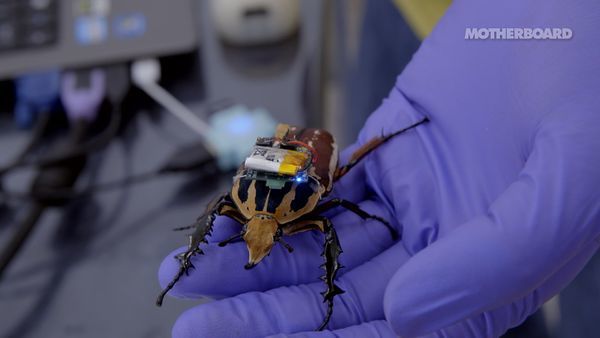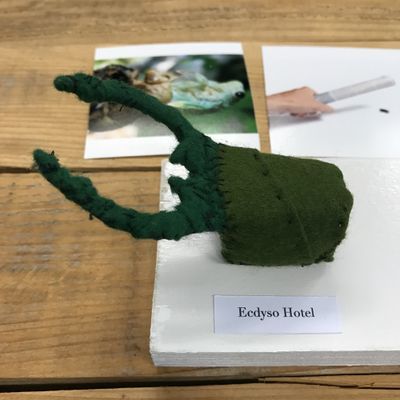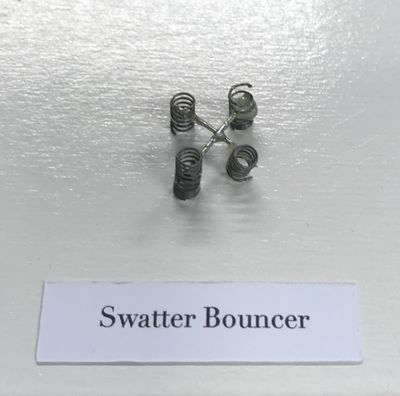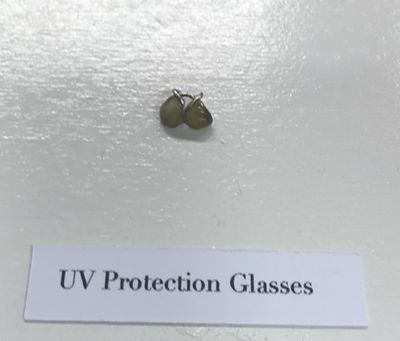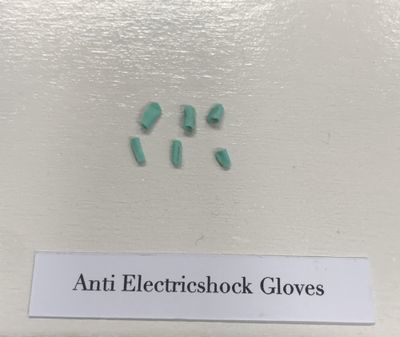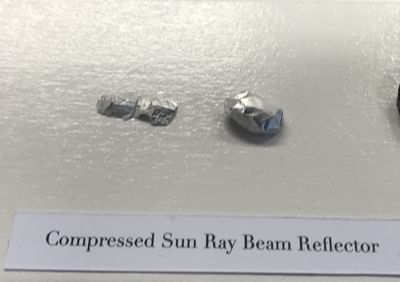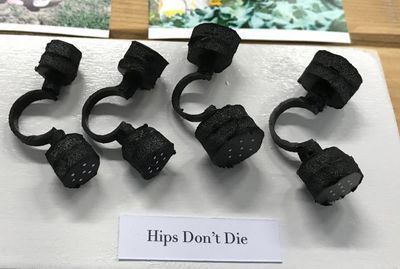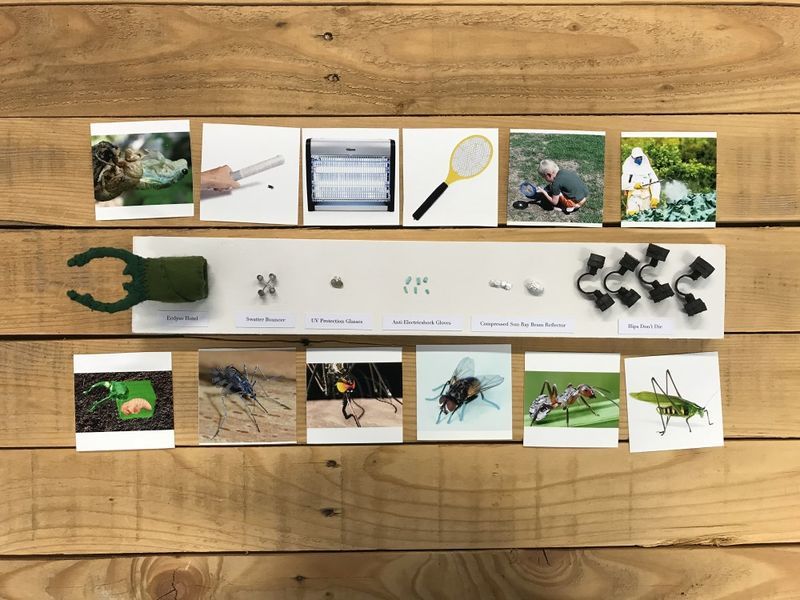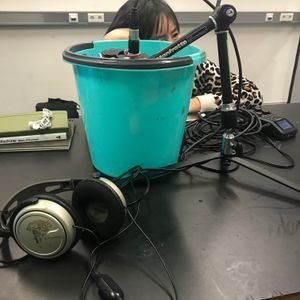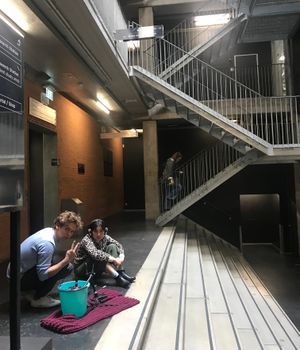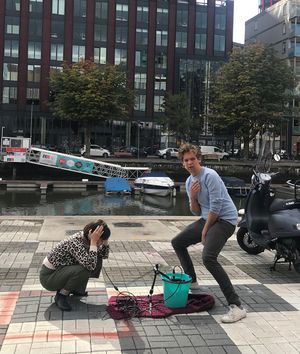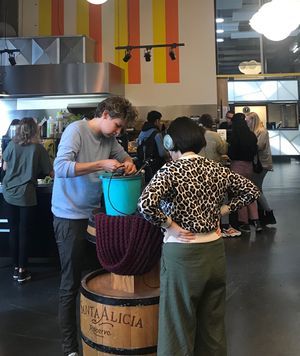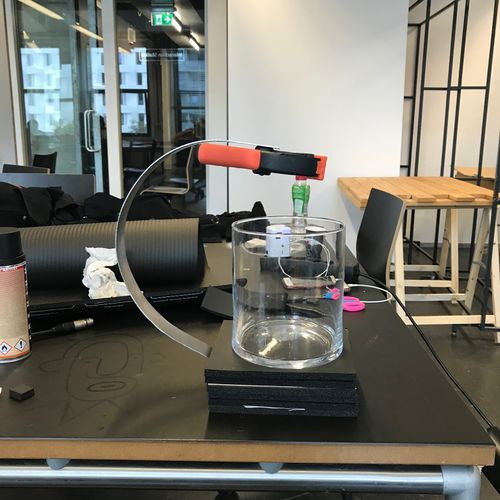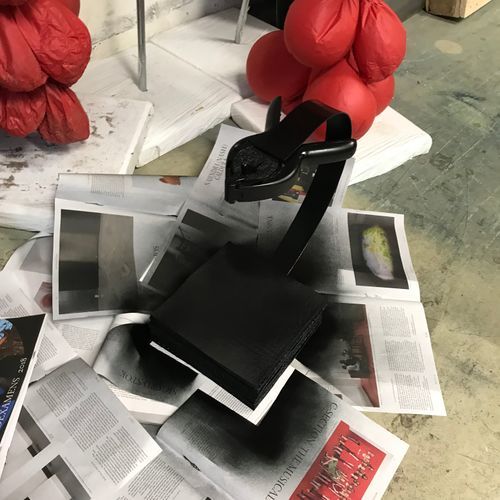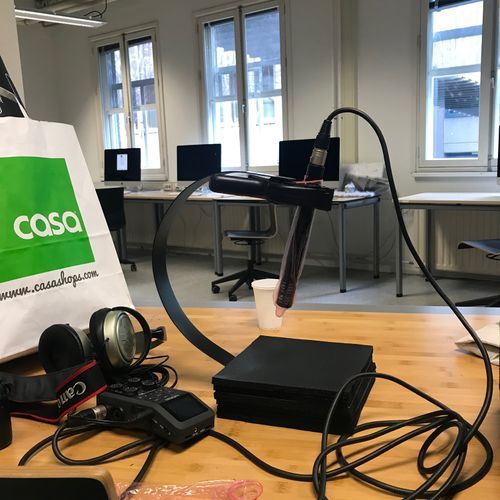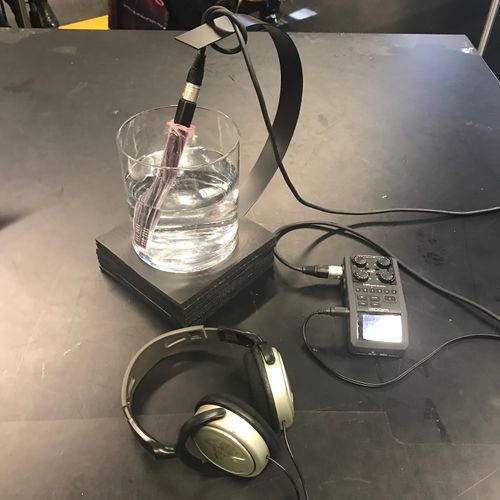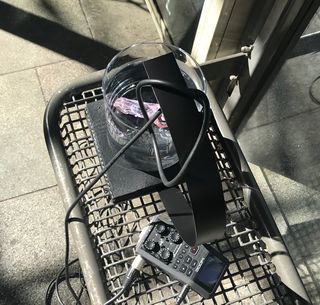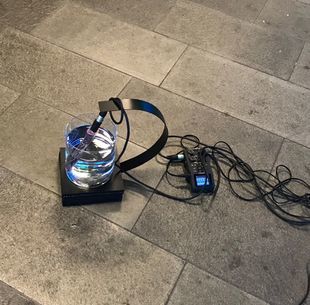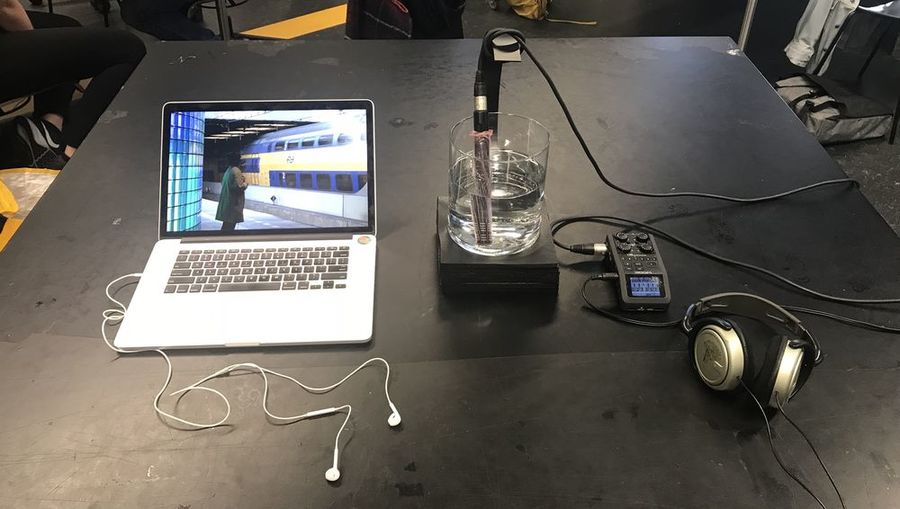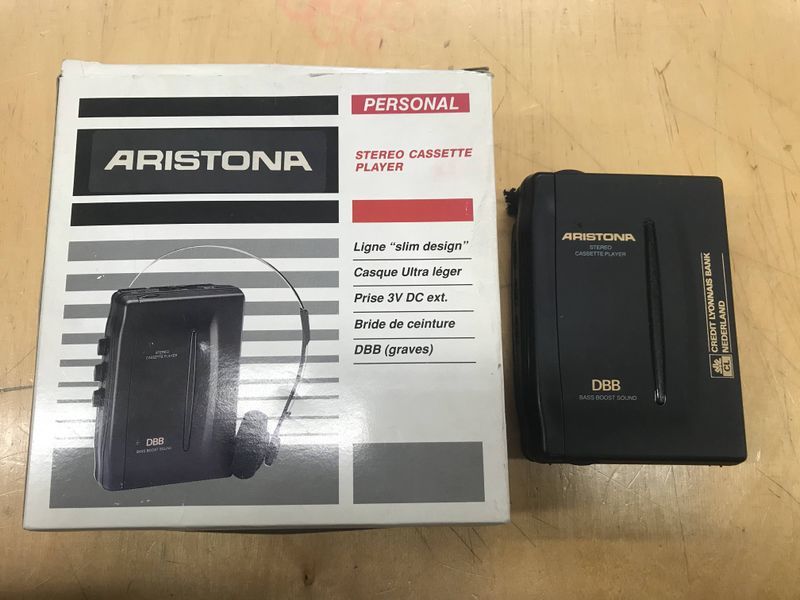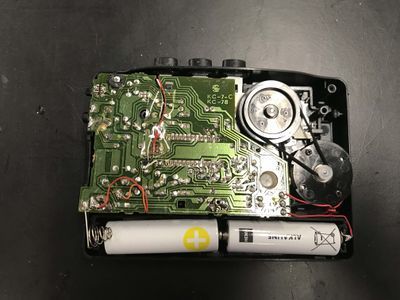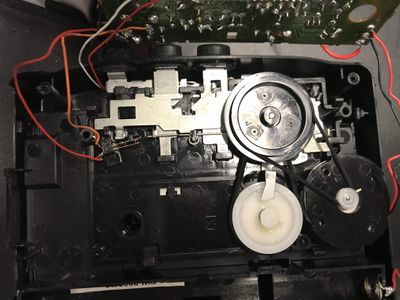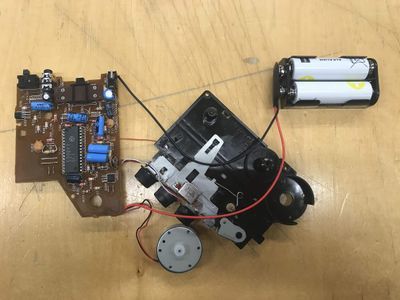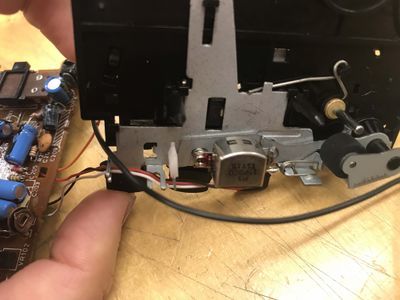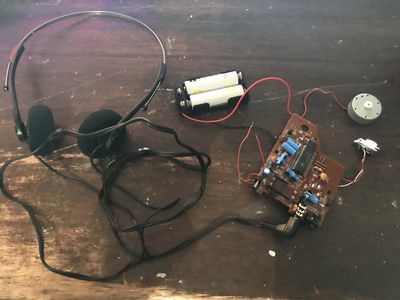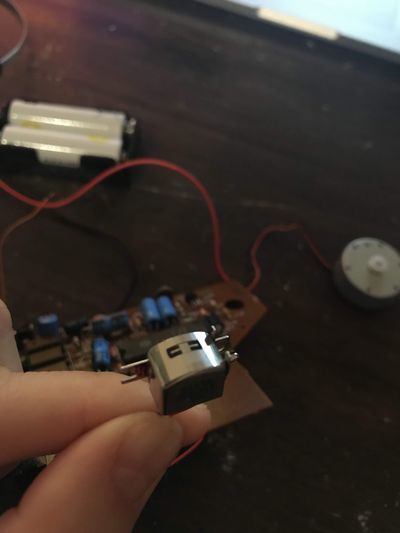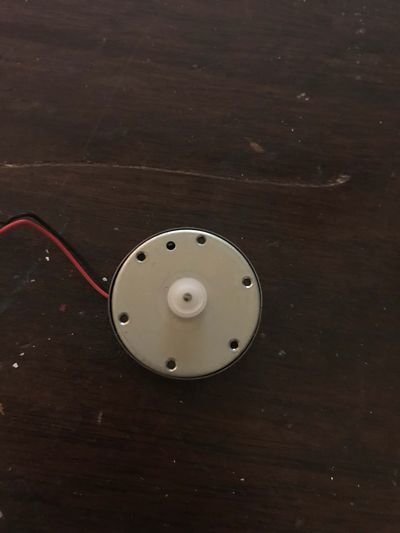Difference between revisions of "Digital Craft Minor 4th Year: Cybernetics"
| Line 91: | Line 91: | ||
(why is this worth pursuing? explain the urgency of your project) | (why is this worth pursuing? explain the urgency of your project) | ||
| − | The starting point of this project is 'sound'. | + | The starting point of this project is 'sound'. How to make an interactive installation using new media technology to make people aware of their surroundings by means of sound? For me, one of my all time interest was sound, so I wanted to commit myself to work with sound for this semester. I have been always fascinated by weird noise and sound, and dreaming of producing electronic music at some point in my life. However, I could not really specify which aspect of sound I was intrigued before. Therefore I decided to something has to do with sound for the exercises. In exercise 2, as a group, we made a device to experience being underwater using water as a sound filter. In exercise 3, I dissembled a tape player to understand more about sound devices. I figured out that a tape head inside the tape play reads the information on the tape so without any tape facing on the tape head, I could hear the noise of electromagnetic field when it was close to magnetic. From exercise 2 and 3, I dragged my research topic as our perception to sound around us. I was interested in the hypnotising and meditating effect of sound since it brings us to another state of mind. I also wanted to define what is the border between sound art and music. Therefore, my research question became “How do we perceive sound around us? How does it affect us? How do we find it meaningful?” |
==Research Approach== | ==Research Approach== | ||
Revision as of 23:29, 27 December 2018
Contents
- 1 Project 1: Critical Making exercise
- 2 Project 2: Cybernetic Prosthetics
- 3 Project 3: From Devices to systems
- 4 Project 4: Cartography of Complex Systems & the Anthropocene
- 5 Final Project (RESEARCH DOCUMENT)
Project 1: Critical Making exercise
Reimagine an existing technology or platform using the provided sets of cards. For this first project, I grouped up with Tutu, Thijs and Naima and we picked three random cards each from different category.
Inspiration
Our starting point
Prototype
Project 2: Cybernetic Prosthetics
Research
First Testing
Making Prototype
Final Result
Aquatic Acoustic
Video Link : https://vimeo.com/292687674
Project 3: From Devices to systems
Cassette recorder to Electromagnetic noise detector
Project 4: Cartography of Complex Systems & the Anthropocene
Final Project (RESEARCH DOCUMENT)
Introduction
(tell us about yourself and your practice)
I take art as a mode of communication, which shows the exploration of my interests and thoughts. I try to capture how I am conscious with my surroundings and intrigue the audiences to question their own. I have been experimenting with different media, mainly photography, text, and sculpture, and came to the new media technology facing the fact that it is an inevitable yet fascinating medium. In spite of my fascination to technology, I could not develop my skillset in this field due to my broad interests. Therefore I chose Digital Craft as Minor to limit myself to actually work in certain context. I believe limitation gives you even more freedom and focusing on certain media and deepening is very important. As an artist, you should be able to utilise any media which is the most suitable to your work. The immersive effect of new media technology is very powerful. Since I become more aware of my recurring theme, I wanted to find the most effective way to deliver my inner thoughts. My work has been more of presenting art objects which has my own experience and narrative behind. However, for me, art is not necessarily about conveying messages. It is more about providing a moment, event, environment by sending an invitation to people to meditate, be in the moment with the artwork. I found the connection between my works and the context of Digital Craft as an interactive conversation of the audiences and their surroundings. Moving things and images, bright screens, LED lights, amplified sounds, new media brought us next level of immersion in our daily lives. However, such an effect made us to easily lose our concentration, mindfulness and need stronger prompts. I wanted to make use of new media technology to provide audiences immersive effects and question the meaning of immersion at the same time. Such as how important it is to be mindful in reality. I wanted to know what media technologies are out there nowadays and what kind of topics are being discussed at the moment. I also like the concept of combining digital and analogue, respecting the value of craftmanship. I appreciate physicality in art form, and working with spatial functionality enables me to create a zone with the artwork and give an immersive effect on audiences.
What is your craft? (define your discipline, method or approach) What are the tools and media of your craft? What are the borders of this practice? (what new media technologies have arisen / what is its future of the field)) Connect to a historical discourse and give concrete examples of contemporary practitioners Define your position of your practice in relation to newer technologies.
Research Question
(in 250 words or less, explain the essence of your research project) (why is this worth pursuing? explain the urgency of your project)
The starting point of this project is 'sound'. How to make an interactive installation using new media technology to make people aware of their surroundings by means of sound? For me, one of my all time interest was sound, so I wanted to commit myself to work with sound for this semester. I have been always fascinated by weird noise and sound, and dreaming of producing electronic music at some point in my life. However, I could not really specify which aspect of sound I was intrigued before. Therefore I decided to something has to do with sound for the exercises. In exercise 2, as a group, we made a device to experience being underwater using water as a sound filter. In exercise 3, I dissembled a tape player to understand more about sound devices. I figured out that a tape head inside the tape play reads the information on the tape so without any tape facing on the tape head, I could hear the noise of electromagnetic field when it was close to magnetic. From exercise 2 and 3, I dragged my research topic as our perception to sound around us. I was interested in the hypnotising and meditating effect of sound since it brings us to another state of mind. I also wanted to define what is the border between sound art and music. Therefore, my research question became “How do we perceive sound around us? How does it affect us? How do we find it meaningful?”
Research Approach
(how do you define and design your research? what activities/approaches/methods will you pursue while conducting your research?) For this project I approached research as by doing/experimenting. At the beginning of the project, I still did not know which aspect of my research topic I would dive into and why I was interested in it. Therefore I limited myself within the theme "sound" and try to explore as I came across with something.
Inspiration/Reference
(what texts will/can support this investigation?) Sound art, using sound as an art medium has been explored a lot in last decades.
Historical context
Electroacoustic Music
John Cage
Indeterminacy in music
Pierre Schaeffer
Musique Concrete, Found Sound, Sampler
Contemporary practitioners
When I was researching to figure out on which aspect of sound I could work, I came across with several musicians and artists inspired me.
Dick Raaijmakers
Phono-kinetic object
Tomoko Sauvage
Japanese musician and artist active since mid 2000’s, investigates the sculpturality of sound and improvisation in relation to the environment. Mainly known for a musical / visual research about ‘natural synthesizer’ of her invention, composed with diverse fluid, bowls, ceramic, light and underwater amplification, Sauvage’s approach is attached to questions of alchemy, meditation and balance between hazard and mastery. Under the form of performances, installations and musical compositions, her work is regularly presented in Europe, Asia and America. For more than ten years, Tomoko Sauvage has been investigating the sound and visual properties of water in different states, as well as those of ceramics, combined with electronics. China bowls of different sizes, filled with water and amplified via hydrophones (underwater microphones), waterbowls is a kind of natural synthesizer that generates fluid timbre using waves, drops and bubbles. These recipients resonate and also produce subaquatic feedback, an acoustic phenomenon that requires fine tuning depending on the amount of water, a subtle volume control and interaction with the acoustic space. Through primordial materials and playful gestures, Tomoko Sauvage searches for a fragile balance between randomness and discipline, chaos and order.
Caterina Barbieri
She is a musician originally trained with classic guitar. She wrote a dissertation about Indian music, subtract composition, repetition, minimalism in music.
Field Research/Events
V2 Klankvorm
The Rest is Noise - Alva Noto
WORM Instruments make play
Experiments
I tried several things to be ended up with my final process. First I tried to make an analogue sound filter for the space. Second, I wanted to explore algorithmic composition with coding and combined with coded visual such as Processing. In the end, I decided to make an interface/installation.
Contact Microphone
As an extension from the second project, I wanted to try out if the contact underwater microphone would work as a water filter in our surroundings. I decided to make a hydrophone myself with two piezo elements and xlr mic cable.
https://www.instructables.com/id/Balanced-piezo-contact-microphones/
Resonator https://www.macprovideo.com/article/ableton-live/have-fun-with-resonators-in-ableton-live/
contact microphone + superCollider Toccata
Algorithmic Composition, Synthesis_SuperCollider
SuperCollider https://supercollider.github.io/
Algorave https://algorave.com/
Paul Prudence
joão martinho moura
Process
Ableton, Found sound
So I decided to make a composition with Ableton. I was interested in found sound, and decided to use them as the musical source. Nowadays we are living in the age of mechanical reproduction and it somehow changed our perspective on beauty. Whenever I walk down the streets, I hear the noise of construction works such as drills, banging hammers that become repetitive in my head and suddenly become a rhythm and then music. First I did some field recordings and manipulated them in DAW Ableton. I warped, cropped the sound and put audio effects to recreate the sound. I put the recorded found sounds in the drum rack to use each elements as a percussion sound. I think pattern and repetition are what makes noises and sound into music. I decided to make a drum machine interface where audiences can create their own beat from the found sounds. I can use touchOSC application as a MIDI controller with an iPad. Then I wanted to visualise the patterns and repetition of the beats. I wanted to visualise it as a movement using motors. I thought this way of creating optical kinetic installation would be effective to show the mesmerising effect of the repetition of the patterns.
Electronics
Servo motor
Adafruit 16 servo shield https://learn.adafruit.com/adafruit-16-channel-pwm-slash-servo-shield/overview
Power Source
OSC
Open Sound Control (OSC) is a protocol for networking sound synthesisers, computers, and other multimedia devices for purposes such as musical performance or show control. OSC's advantages include interoperability, accuracy, flexibility and enhanced organisation and documentation. With the Ableton Connection Kit (https://www.ableton.com/en/packs/connection-kit/), it is easy to control motors, LED, etc via Arduino. However, since I am planning to use 12 servo motors and using a shield for Arduino, the digital outputs have been changed. So Ableton could not read the shield. I asked Mike in interaction station for a help, and he suggested me to send OSC to Processing and connect it to Arduino.
Material exploration
Metal Sheet (Steel)
Wire
Found/Scrap object
colour points
Moving creature
Realised work
(what did you actually make) (what have you pulled from your hands on practice based research?)
Patterns of Consciousness
Found sound (surrounding, environment), pattern, repetition, time-based
being in the moment, consciousness
indeterminacy
phono-kinetic object, acoustic
interaction/interface installation
movement (creating awareness, attention catching)
Reflection
(what was the point? what do you take away?) What worked? What missed? How to improve? Context Medium
From the exhibition, I figured out that my work was quite self-explaining which worked in a good way. When people wore the headphone and touched the iPad, they realised the interaction between their touch, sound and the motor. And then they played with it for a while.
However, I think there should be some ways to enhance the whole experience with each elements as a whole. The sound from the headphone was of course my main purposed sound, but there was another sound coming from the movement of the motors and their scratches on the metal sheet. This was my intention to have as well but when the audiences wear the headphone, the two sounds are disconnected.
The interface for the audience input is quite minimally intuitive. However, I could have used each colours, shapes more relevant to the physical objects. Apart from that, I actually want to make another physical input device or environment, not with a touch pad.
Questions for the presentation
Image 1: What did you make? (Show one image of your semester work that was the most inspiring)
Image 2: What did you miss? (What do you to connect to, bring in, or explore that is not covered by the curriculum)
Image 3: What is your topic of interest? (Explain though a visual what area you wish to further explore)
Image 4: What is your medium? (Explain what materials and tools you wish to use)
Image 5: What is your question? (Try to formulate one (preliminary research) question that will guide your investigation)
Final Conclusion
How I redefined my position within my art practice. Interaction became important element to me. Conversation with the moment/surrounding. To make oneself more conscious of the surrounding, to be in the moment. how to make an interactive installation using new media technology to make people aware of their surroundings by means of sound
Next step? Similar thing? mindfulness, meditation (how to be immersed in the surrounding) conversation with the environment (how we are conscious of it) transformation of the moment/surrounding
context of digital craft immersive effects of new media technology interaction, intriguing, invitation
pattern, repetition, time-based
There are several many ways I want to take from now on. Mostly, I want to develop the interactive sound installation with more spatial merged quality and various elements. I would like to study circuit bending and sound generation technique with electronics in depth. By doing so, I could make my own instrument as well as an extension of the interactive sound installation. I want to focus on the interface to make it as a whole, providing it as a performative scene. At the same time I would like to try performance with my potential sound installation/instrument as well.
Bibliography
(what did you reference in this text (other texts, images, films, exhibitions)? Remember to use proper in-text citing!!!!!!!!!!
Klankvorm @V2
The Rest is Noise: Alva Noto
Instrument Make Play @Worm
